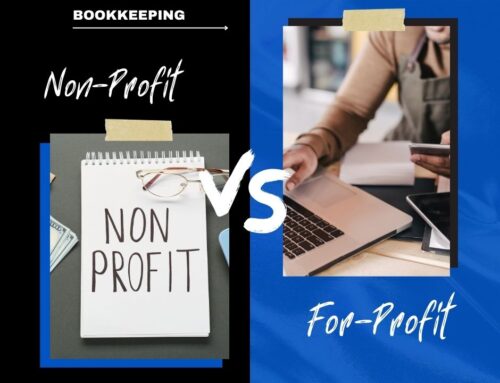Every business needs to understand accounts receivables and accounts payables. These two terms are the foundation for buying and selling on credit.
Without a proper grasp of these concepts, your business will have inaccurate financial reporting.
But once you’re able to identify accounts receivables and accounts payables, it will save you lots of time and headaches down the road.
In this guide, I’ll define each term and explain the differences between the two. After reading through this resource, you’ll have a much better understanding of how receivables and payables work.
Accounts Receivable
Any money that a business has not yet received from its customers is classified as an account receivable. Simply put, this money owed to you.
Each time you sell a product or service, you might not get paid right away, yet the transaction still needs to be recorded.
For example, let’s say your business paints houses. After you finish painting a house, you send an invoice to the customer that’s due within 30 days. That amount due goes in your accounts receivable.
Here’s another example. A customer drops off clothes to be cleaned at their local dry cleaner. They get a ticket and invoice for their order that won’t be ready until next week. The customer doesn’t need to pay for their clothes until the order is picked up.
The amount of that invoice is recorded as accounts receivable as well.
Accounts Payable
In addition to selling products or services on credit, your business will also buy on credit.
Any money that your business owes to a vendor or supplier is classified as accounts payable.
For example, let’s say you buy production supplies at a wholesale price from a vendor that ships goods to your facility once per week. At the end of the month, they send you an invoice for your purchases. The amount due on the invoice from your supplier would be accounts payable.
Maybe your small business has a relationship with a local service garage and gas station. Any time your drivers need gas or have a problem with their company vehicle, they go to the garage but don’t pay anything on site. Every two weeks, the garage sends you an invoice for gas and automobile repairs.
That’s another example of accounts payable.
Differences Between Accounts Receivable and Accounts Payable
As you can tell from the definitions and examples, receivables and payables are very different.
With that said, I want to go into more specific details about the differences between each. This will give you a much better understanding of how these accounts work.
Assets vs. Liabilities
Both accounts receivable and accounts payable will appear on your balance sheet. However, they’ll be recorded in two different sections.
Accounts receivables are assets. More specifically, they are current assets, since they can be converted to cash in less than a year. Most invoices will probably be due within 30 days or so.
Accounts payables are short-term liabilities. This is money that needs to be paid soon–usually within 30 days of receiving an invoice.
Cash Flow
In addition to the balance sheet, your payables and receivables are also crucial components of your cash flow statements.
This financial report tracks money coming in and money going out.
Cash flow statements are required for accrual-based accounting, which means revenue and expenses are recorded when the transaction occurs, as opposed to when cash changes hands.
Operations, financing, and investing are the three main categories of a cash flow statement. Accounts receivable and accounts payable will both fall into the operations category.
All receivables are considered cash inflow while payables are classified as cash outflow.
Responsibility
It’s the responsibility of debtors to pay your accounts receivables. When you send a bill to your customers, you expect them to pay it.
With that said, you should always follow up on receivables to ensure that they are collected in a timely fashion. Make sure you apply effective invoicing best practices.
On the other hand, it’s your responsibility to pay any accounts payables that are owed by your business.
Failure to pay those outstanding balances can damage your relationship with vendors and suppliers. Not only can that impact your ability to get resources, but it could also damage the credit score of your business.
Conclusion
While accounts receivables and accounts payables are essentially opposites, they both represent the symmetry that we always look for in accounting.
If Company A sells a product to Company B on credit, then company A records the sale as a receivable, and Company B records the purchase as a payable.
For those of you who need some help recording these transactions and managing your books, you might want to consider using an outsourced bookkeeping service.





